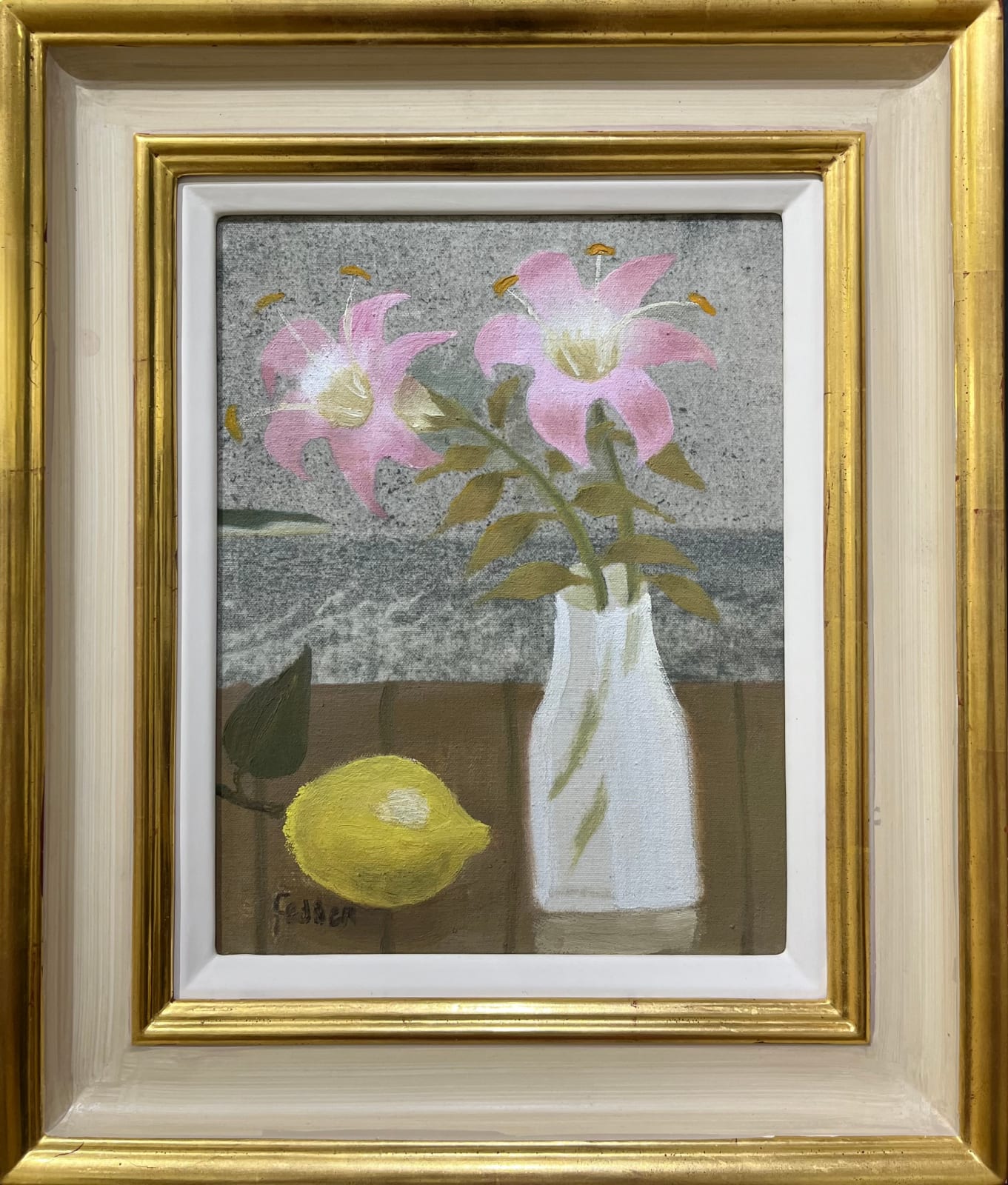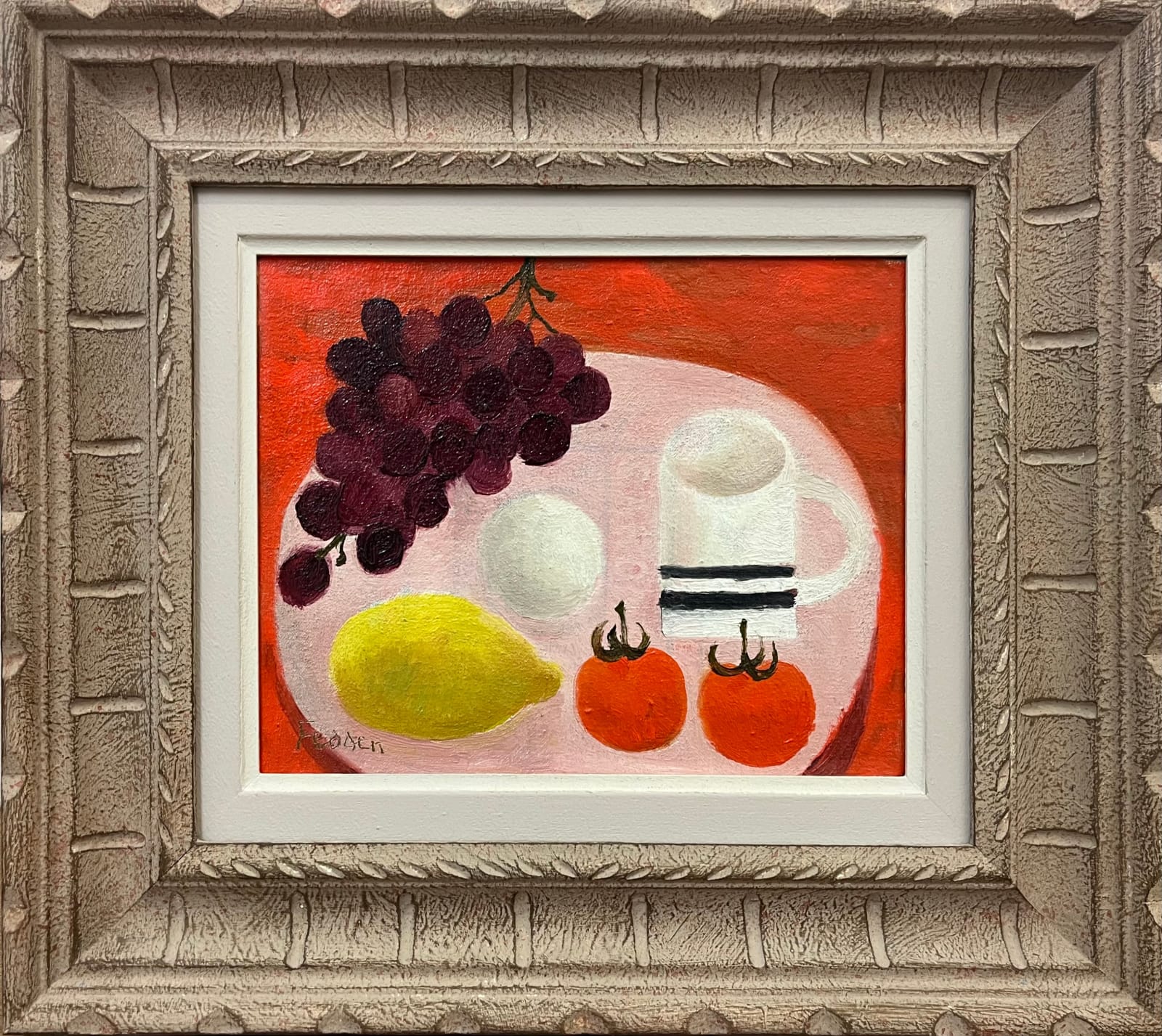There’s something instantly comforting and oddly compelling about a Mary Fedden painting. Maybe it’s the neat arrangement of fruit beside a striped mug, or a cat peering out with the mild suspicion only felines can muster. Either way, her work lingers. As one of the most beloved British still life artists of the 20th century, Fedden painted domestic moments with a quiet clarity that’s hard to forget. Her compositions, though seemingly simple, are richly styled and often carry more weight than they let on.
Whether you're already drawn to Mary Fedden paintings or just curious about what makes them so collectable, her choice of subjects - cats, cups, and coastal scenes - offers more than a peek into her world. It’s almost like an invitation.
Who Was Mary Fedden?
Mary Fedden, born in Bristol in 1915, quietly shaped the story of 20th-century British art. After training at the Slade School of Fine Art, she developed a style that seemed both structured and slightly offbeat, which is exactly what made it so distinctive. Her career spanned decades, and so did her influence, especially through her teaching roles at the Royal College of Art, where her students included David Hockney.
Fedden painted right up until her final years, never straying far from her preferred subjects: still life, seaside scenes, and those famously expressive cats. As a female British artist working in what was still very much a male-dominated art world, she carved out a reputation that felt entirely her own. Collectors still seek out Mary Fedden paintings for their mix of wit, elegance, and emotional accessibility; a balance not easily found.
She married fellow artist Julian Trevelyan in 1951, and the two shared a Thames-side studio at Durham Wharf for decades. Fedden was elected President of the Royal West of England Academy between 1984 and 1988, and later became a Royal Academian on 27th May 1992. She continued painting well into her nineties and sadly passed away in 2012, aged 96.
Everyday Objects in Her Still Life Work

In a Mary Fedden still life, a jug isn’t just a jug, it’s a quiet anchor, holding the composition together in a way that’s both deliberate and a little playful. She often painted simple domestic objects: teacups, striped mugs, bits of fruit, patterned cloths. They weren’t chosen for grandeur, but for their familiarity. That’s what makes them so magnetic. The ordinary becomes quietly extraordinary.
Her background in set design probably played a part, every object seems placed with purpose, almost like a stage prop waiting to act. You might see a slice of melon beside a stone vase or a dark plum next to a bright lemon, arranged so that your eye keeps moving. Fedden had a clear sense of balance, but never let it feel too neat.
These still-life paintings didn’t just reflect her surroundings, they built a language. In fact, among modern British painters, few captured the tension between comfort and clarity with such charm. And for collectors, that balance is exactly what makes her work linger long after first glance.
Her Love of Cats as Subjects
Mary Fedden’s cats weren’t just decorative, they were characters. You’ll spot them lounging near vases, curled beneath tables, or watching from the corners of her compositions with an air of mild disapproval. In many ways, they seem to be stand-ins for human presence, only quieter and more mysterious. And it’s that slight ambiguity that makes them so effective.
These feline figures weren’t randomly added, either. Fedden lived with cats for much of her life, and they often crept into her work, sometimes playfully, sometimes almost solemnly. Their curved forms mirrored her love of strong, simplified shapes, and their positioning often added weight or pause to the rhythm of her still-life scenes.
For collectors, Mary Fedden cats carry a bit of narrative, they give her paintings a lived-in feel, something gently personal. And that touch of warmth, or mischief, depending on the cat, tends to invite longer looking. It’s less about realism, and more about relationship.
Coastal Views and Landscape Scenes
Mary Fedden’s landscapes tend to feel as if they’ve been remembered, not just observed. Places like Cornwall, Wales, and the coasts of France appear in her work but always through her lens, softened and rearranged into something unmistakably hers. These aren’t grand, sweeping vistas. They’re smaller, quieter – often seaside cottages, fishing boats, or striped beach huts – placed with care and surrounded by pools of gentle colour.
What makes Mary Fedden landscapes so distinctive is their tone. Her palette, though bold, never overwhelms. There’s a restraint, even in her use of deep blue or terracotta orange, that suggests she was less interested in spectacle and more concerned with atmosphere. These views aren’t about showing you where she stood, they’re about showing you how she felt.
For collectors, this connection to place is important. It turns a painting into something more like a memory. One that, even if not your own, feels oddly familiar.
How Her Style Evolved Over Time

Though Mary Fedden’s subjects stayed fairly consistent throughout her life, her handling of them changed. Early on, you can spot the pull of Modernism, especially in her use of flat perspective and sharp contrasts. But as she matured, her brushwork grew looser, her palette more confident, and her sense of space more assured. It was never about perfection. It was about presence.
Her years teaching at the Royal College of Art clearly kept her thinking, too. There’s a real clarity in her later paintings, not just visually, but emotionally. The colours became bolder, the outlines stronger, and yet the work felt lighter somehow. More distilled.
Among female British artists, Fedden stands out for having developed a visual language that aged gracefully. She didn’t reinvent her style with each decade — she refined it. And that quiet confidence is, in many ways, what makes Mary Fedden paintings feel timeless.
Mary Fedden’s art is the kind that doesn’t shout, it settles in. Whether it's a jug placed just so, a coastal window view, or a cat watching quietly from the edge of the canvas, her paintings offer small, steady moments of delight. For those starting a collection or adding to one, her work holds lasting appeal, not only in its charm but in its collectability.
To see what’s currently available, contact us at Contemporary Six, where we can look to answer your questions or set up viewings to suit you.

